@winewhiskywatches and his MB&F Legacy Machine No.1
A conversation about MB&F’s very first “Legacy Machine” and why taking “the long view” might actually be the right strategy when it comes to collecting independent watches...
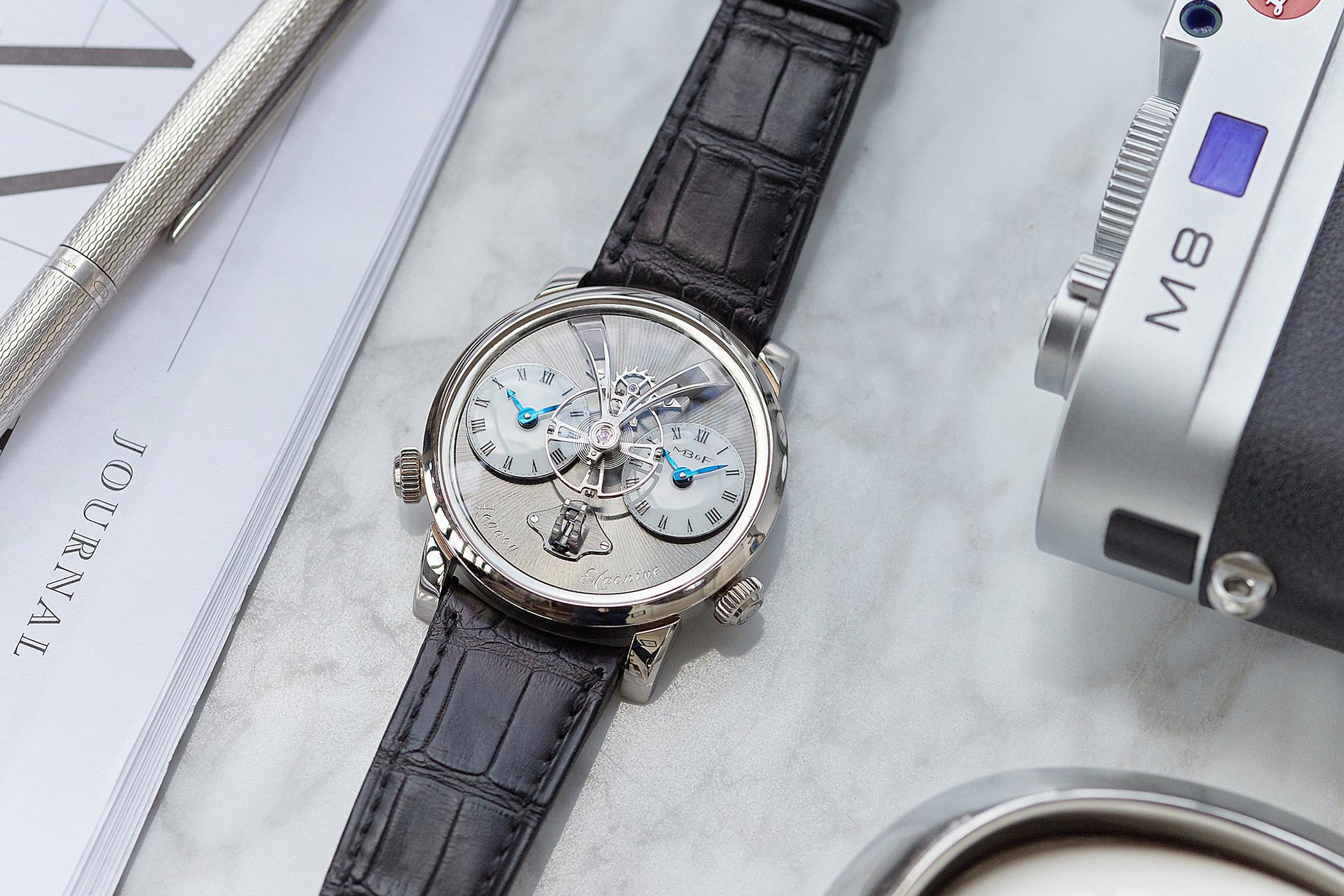
I can remember clearly when MB&F’s Max Busser showed me the Legacy Machine 1 for the first time. It is simply one of those watches that immediately makes an everlasting impression. Mind you, this was a few years ago when such technicalities were simply absent from other brands, small or big. It was revolutionary and groundbreaking and paved the way for others. One of the collectors who already appeared in our Collector’s Series goes under the IG handle @winewhiskywatches and today we’re talking about his magnificent MB&F Legacy Machine 1 in white gold.
@winewhiskeywatches already talked about his Armin Strom Mirrored Force Resonance and the IWC Big Pilot Tribute to 5002 and he talks about his watches with a lot of knowledge and passion. As a seasoned collector, he knows what he wants and, at least as important, why he wants it. This is the way that some of the most esteemed collectors operate and it doesn’t matter whether you can purchase an MB&F or an Armin Strom, or watches of an entirely different price segment. It’s the way you handle it. How you read, discuss, enrich your knowledge, which slowly but gradually leads to your next target. Now without further ado…
P.S. Besides the owner’s photos, we will also use some of the beautiful photos by A Collected Man in London.
Frank Geelen – What first drew you to MB&F as a brand?
@winewhiskeywatches – Once I started looking beyond the big brands and began exploring the world of independent watchmaking, it didn’t take very long before I understood that MB&F was a brand that should be on every watch collector’s radar. Whether the metric is creative design, horological innovation or movement finishing – they’re in the top tier. I started paying attention to the brand some time before they released this Legacy Machine No. 1 in 2011. Their prior “Horological Machine” watches were so different, so whimsical and so inventive, that even if I couldn’t imagine myself wearing one, I still found myself spending a lot of time learning about them. That collection was apparently inspired by things that fascinated Max Büsser [MB&F’s founder] in his childhood – things like spaceships, robots, planes and race cars. But as unconventional as most of those watches are, I do think that they’re all genuine ‘art’ pieces.
That said, for many people – perhaps most people – they can also be too impractical in size or just too “out there” in their designs. But the integrity of MB&F’s artistic vision, the bravery required for Max Büsser to have repeatedly bet his company on his truly unconventional ideas – and the magnitude of their horological ambitions – are all so interesting and admirable that you can’t help but root for MB&F’s continued success.
Hear, hear! So did you buy a Horological Machine?
No, I never did. Like many collectors, I admired what MB&F was trying to do but I didn’t feel like I could pull off one of those unconventional watches on my own wrist. I do feel differently today, so never say never…
What did you find so compelling about the Legacy Machine No.1?
I’ll start by quoting Büsser and say that “the main aspect of LM1 is, of course, the flying balance wheel…and the rest is symmetry.” But there’s obviously more to it than that. My first reaction when I first saw the LM1 was that it was an incredibly ambitious fusion of styles that somehow seamlessly came together to convey a retro-futurist vibe in an entirely original way. It was aesthetically appealing and yet so different from every other high-end watch that I’d ever seen – but it didn’t stray so far from the norm that I couldn’t see myself wearing it. When viewed from various angles, it really does look like some sort of “kinetic sculpture”; but it’s also an immaculately finished watch that embodies the very highest standards of traditional watchmaking.
Some of the more noteworthy elements that drew me to the LM1 were its skeletonized arch-like bridge that suspends a huge 14mm balance wheel above the dial, its domed sapphire crystal, its enamel-like dual time displays, that ruthenium dial and blued hands that constantly change colour with variations in lighting, its insanely creative vertical power reserve indicator, and of course, that incredibly well-finished “three-dimensional” movement. When I first saw it I immediately knew that I wanted one. I’d had a similar feeling about a few other watches in my collection and I’ve learned to trust it; because those are the watches that haven’t resulted in any buyer’s remorse – and none of them has ever left my collection. I’d been fascinated by MB&F for a long time, but I needed a little bit more of a “conventional” design to get onboard – and the LM1 offered me exactly that.
It’s interesting to hear you use the word “conventional” to describe the LM1 when there’s really nothing else quite like it.
It’s obviously true that a quasi dress watch that’s 44mm wide and 16mm tall with a domed sapphire crystal and a 14mm flying balance wheel hovering above its dial is more than a little unconventional – but for MB&F it was downright small in size, more conventional than anything they’d ever done, and even uncharacteristically practical. Its aesthetic design is clearly outside the norms of standard watchmaking – but when you compare it to the Horological Machines it’s an indisputably more accessible design.
Legacy Machine 1 became the gateway drug.
Is it your view that MB&F was playing it safe when they launched the LM1?
Quite the contrary. Whether they knew it then or not, I think that MB&F took an enormous risk on the LM1. Think about it: by that point in time, MB&F had already taken on huge financial and artistic risks with their Horological Machines – and those risks had already paid off. Then, after successfully establishing themselves as a visionary leader in the “watches that I designed for myself, not for you” movement, they made a watch that could easily have led to accusations that they were “selling out” and going mainstream – simply by virtue of having made a round watch of reasonable proportions.
It seemed to me that the LM1 represented a huge potential risk to their established brand positioning – and that it could have jeopardized all of the credibility that they had earned up to that point. Fortunately, those risks didn’t materialize and the LM1 turned out to be exactly what I think MB&F needed.
Can you elaborate a bit on that?
I personally believe that the LM1 was a very important watch for MB&F because it drew collectors like me to consider the brand who perhaps wouldn’t have done so otherwise. It became the gateway drug. It’s my guess that even today, it would still be a minority of collectors that would start with the idea of acquiring an “Art For The Wrist” Horological Machine as their first MB&F acquisition.
The LM1 and the other Legacy Machines, by virtue of their exceptional horological creativity but more accessible design DNA, effectively provided an important intermediate access point into the brand. Providing an accessible on-ramp into the insanely imaginative world of MB&F with an immaculately finished and somewhat traditional watch movement – in a round case – probably made them a much more credible brand from the perspective of a huge swathe of collectors.
Do you think that was MB&F’s intention?
Based on interviews at the time, I think that they would probably say “no”. They’re on the record as saying that the decision to “go round” wasn’t marketing-driven at all. Apparently there was even substantial internal resistance at MB&F against the idea of producing a round watch. The story goes that they were struggling with designing a case that would pair well with MB&F’s vision for the LM1 movement without it looking derivative of other watchmakers’ designs – and they kept coming back to a round case.
I think that it turned out to be a great design decision in the context of the Legacy Machine Collection’s “raison-d’être” – which was to pay tribute to the great master watchmakers of the past…who typically used round cases for their pocket watch movements. Of course, the LM1 is far from being a typical tribute watch. The conceptual connective tissue, which was necessary to credibly apply a retro-futurist design ethos to such a project, was cleverly justified on the basis of one simple question: what did Max Büsser imagine that he might have designed had he been born in the late 19th century? That design concept freed him from the shackles of 19th-century design and enabled him to instead base his design on the influences that he believes would have likely inspired him had he lived in that century. That would include things like the Eiffel Tower, pocket watch movements and the imaginative inventions described in the Jules Verne novels.
Some have suggested a Steampunk influence…
There’s an arguable similarity of inspiration between MB&F’s vision and that of the steampunk design movement, but the watches are very clearly differentiated from what you’d expect from that movement – particularly in their execution. When I first experienced my LM1, I was surprised by how it much it exuded luxury, quality and craft – and how it displayed an obvious completeness of vision. There aren’t any unnecessary elements to project some sort of steampunk aesthetic. It really does feel authentically inspired by what I can imagine the technological fantasies of a 19th-century boy might have been.
There were a total of five iterations of the MB&F LM1, besides several special collaborations, produced from 2011-2017. What drove your decision to acquire this particular one?
Well, besides the fact that the ruthenium dial is my favourite, this was the first one. This iteration in white gold – and the red gold iteration – were the originals. I’m partial to white metals so this iteration was my default choice. This version wasn’t limited per se, but the total production of the now-retired LM1 across all iterations, including the collaborations with Alain Silberstein and Chinese artist Xia Hang, numbered just 429 watches. So even the non-limited iterations are actually quite rare because MB&F has always been limited by their production capacity. For myself, I wanted the very first release of the very first Legacy Machine; though I admit that I was somewhat torn between this one and the 2017 “Final Edition” in steel.
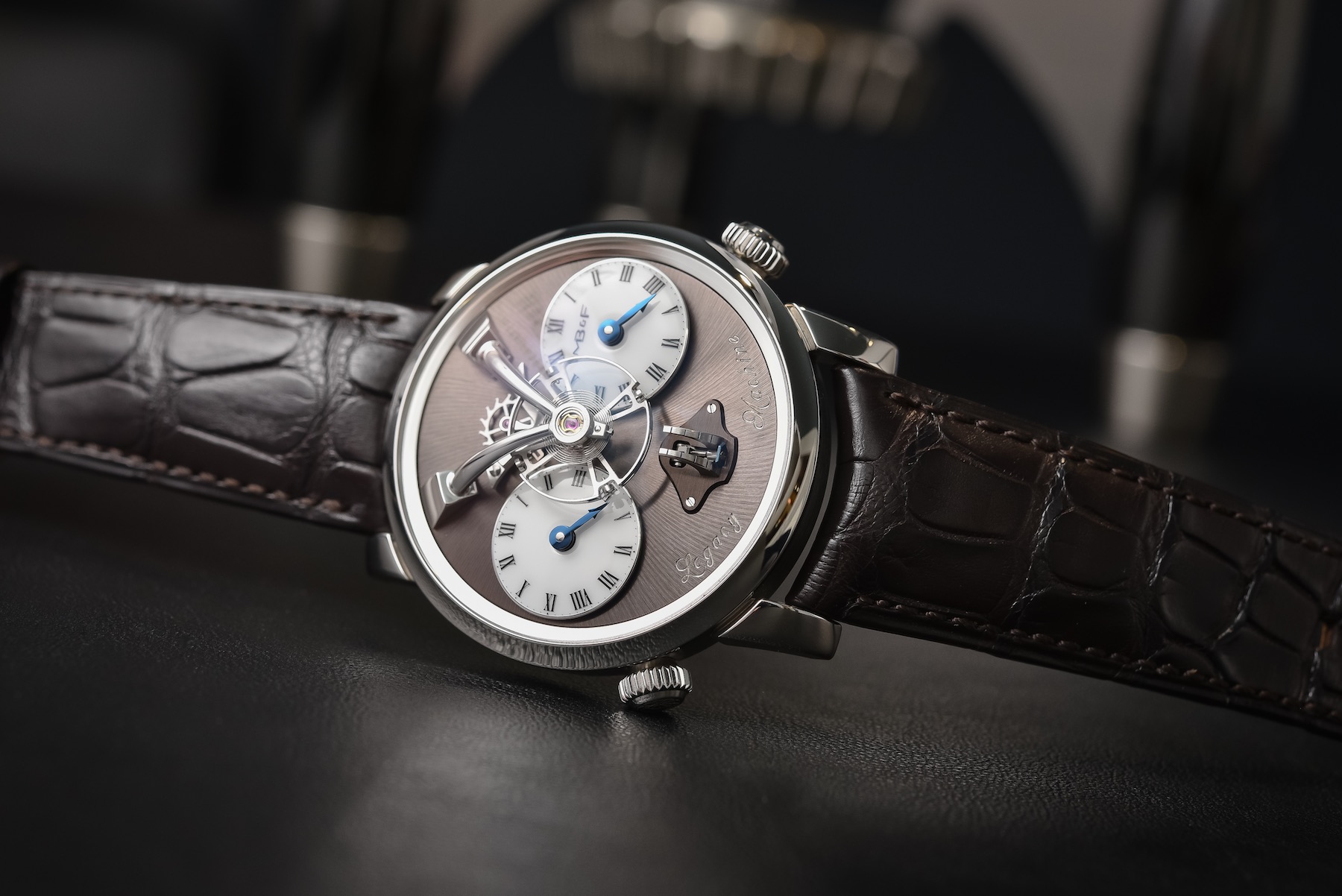
In a prior interview we focused on your Armin Strom Mirrored Force Resonance. I couldn’t help noting what that watch has in common with this MB&F “Legacy Machine No. 1”…
[LAUGH] You mean besides independent thinking, ruthenium coatings and dial-side balance wheels? I’m guessing that you’re referring to the participation of Kari Voutilainen, who contributed meaningfully to both watches, albeit in entirely different ways.
Exactamundo!
The Armin Strom features a Kari Voutilainen guilloché dial, whereas in the MB&F his participation was focused on the aesthetic design and finishing specifications of the movement.
What are your up-close impressions of that movement?
MB&F describes it as a “three-dimensional movement” that was designed from a 19th-century perspective – which is in keeping with the overall concept for the LM1. It was developed by master movement architect Jean-François Mojon of Chronode in order to realize Max Busser’s “kinetic sculpture” ambitions for the watch, most specifically the floating balance wheel above the dial.
Horological superstar Kari Voutilainen contributed the 19th-century movement styling and finishing specifications – and I’m told that he personally inspected each one before it was cased. All three of their signatures are hand-engraved on the movement itself. As I’m sure an accompanying photo will demonstrate, the movement is exceptionally beautiful. You can see how the shape and style of the bridges were inspired by historic pocket watch calibres.
The anglage and the gold chatons with polished countersinks are obvious highlights. Combined with its internal bevel angles, its polished bevels and its Geneva waves, the LM1 offers a master class in 19th-century hand-finishing techniques. The movement itself is manually wound and it has just one mainspring barrel to power both time displays. Unlike the FP Journe Resonance and the Armin Strom Dual Time Resonance, which both also have two independent time displays to enable autonomous settings for both minutes and hours without reference to fixed time zones – this movement uses just one mainspring barrel and a single escapement to run them. Each one has its own crown to set the time, but only one of them can be used to wind the movement. The key visual element, of course, is the 14mm flying balance wheel that sits at the highest point on the movement. It beats at a hypnotic 18,000bph to enable the naked eye to enjoy the show.
The vertical power reserve indicator is another unique attribute of the LM1. You have to wonder how they came up with that…
It is really cool and it’s an utterly original approach. The blued steel indicator ascends up between the arches as you wind the movement, and it descends over time as the mainspring releases its energy. I read somewhere that the LM1’s vertical power reserve indicator was inspired by a sextant, which I’d assumed at the time was a reference to the type of navigation instrument that measures angular distances between two visible objects, like the horizon and either the sun or the moon, to determine latitude and longitude. But then I recognized a strong visual resemblance to another type of sextant, a “Fakhri Sextant“ [aka a “mural sextant”] – an enormous construct that was used over a thousand years ago to measure the Sun’s angle above the horizon. A 15th-century, 40.4-metre “Fakhri Sextant“ still exists in Uzbekistan today and the photos of it bear a striking resemblance to that vertical power indicator. Now I can’t help wondering whether it wasn’t at least partly inspired by “Ulugh Beg’s Fakhri Sextant“ in Uzbekistan. Hopefully, we can include a photo of that in this interview so people can judge for themselves.

When you look at the photo, you can see that it consists of an arc with a staircase on either side to provide access for the people who performed the measurements. Now, look at the linear power reserve indicator’s arches that support the blued steel power indicator. The similarity is striking, right?
The next time that you interview Max Busser, a question about exactly which sextant inspired his vertical power reserve indicator might be an interesting one to ask!
I’ll try and remember that one. What are your favourite independent watch brands right now?
I’ve got three independent brands in my collection right now, not including Patek and AP: MB&F, Armin Strom and FP Journe. I’m enthusiastic about all three and I hope to add more watches from each of them. I’ve already ordered a second Armin Strom – a custom tourbillon – and I would love to someday add their dual-time Resonance to my collection. I also hope to add a Voutilainen watch at some point; as my collection feels somewhat incomplete without one. I’m a fan of the Grönefeld brothers for the beauty of their movements and I also like Romain Gauthier and Rexhep Rexhepi.
A great list. They’re all doing fantastic work, each with a somewhat different focus, but they all share a passionate commitment to watchmaking that seems to transcend commercial concerns…
Exactly right in my opinion. It was precisely that philosophical orientation that attracted me to independent watchmakers in the first place.
Like you, I’m a collector and also a big fan of independent watchmaking – but I’m often asked to respond to concerns about their value retention and even their profit potential. How do you respond to such questions?
Truthfully, I generally try not to engage on those issues at all – but I do believe that the financial arguments, particularly the ones against the best independents, are actually quite misguided. In my view, the naysayers assess the investment potential of these watches across the wrong time horizon. Over a longer time frame, I believe that it’s only the actual scarcity of desirable artistic works that can drive any sustainable investment value.
New “big brand” watches, particularly Rolex steel sports, are increasingly and foolishly regarded as long-term “alternative investments” that merit paying grey-market premiums for their investment potential. But it should be clear by now that many of those watches are, to a large extent, currently being traded by dealers to other dealers – and that there’s a lot of “new old stock” that’s been stockpiled by speculators. When Rolex releases the next “big thing”, and those dealers in the secondary market ultimately move on to the next “hot” watch to pump and dump, those who paid well over retail prices for their Rolexes as “investments” should expect serious regret as prices fall and their investment returns turn negative. That’s because those watches have never actually been rare – they’re just mass-produced commodities that are currently being hoarded.
Now, when you assess the long game for the best independent watches, the opposite seems more likely to be true because they are actually rare. MB&F only made 218 watches last year – across all of their models. Only 429 LM1s were ever made in its entire production life, in no less than ten different iterations.
Armin Strom’s annual production of Mirrored Force Resonance watches is just 35 watches – with twelve official dial options plus a few unofficial ones. These sorts of watches are always going to be rare. That’s one of the reasons why I think, in the long run, that the best independent watches actually represent a lower financial risk and a better speculative opportunity than the mass-produced big brand watches that are currently in vogue. Take my second-generation FP Journe Resonance for instance. Only 52 were ever made in the same specific iteration as mine – and it has more than quadrupled in value since I acquired it. That’s after its value initially fell and then stagnated for well over a decade. Ultimately, the watch market caught on that there was something special about it and the reality is that it’s actually quite rare – particularly when compared to serially produced big brand watches.
There’s always the risk that limited-production independent watches will fade into obscurity – but I do think that it’s far more likely that market awareness about the better independents will increase over time and drive investment value than it is that the vast majority of trendy mass-produced big brand watches will enjoy any sustainable long term investment potential. In the case of MB&F, I think it’s noteworthy that MB&F’s sales focus is divided equally between Asia, America and the combined markets of the Middle East and Europe. And they have virtually no presence in Europe. And they aren’t in other important markets for high-end watchmaking at all – such as China, Japan, Korea or India.
As those markets gain more appreciation for what MB&F does, I imagine that auction values will inevitably have to climb along with demand. But since I don’t actually buy watches to sell them, there really isn’t much downside for me if I turn out to be wrong. One thing that I’m sure about: when I look back on those choices many years or even a few decades from now, that I’ll have enjoyed the intrinsic artistic and horological value of my independent watches much more than any mass-produced watches that I might have bought instead – and I’m sure that I’ll still appreciate the fundamentally differentiated craft and ingenuity that went into making them.
Any other insights about the LM1?
Many MB&F watches seem to have “eyes” that appear to be staring at you, which makes the robot watch stand that MB&F sells in their MAD Galleries look perfectly matched to many of their watches. This LM1 is no exception. The first thing that I did after buying an LM1 was to order that Robot stand.
I’ve noticed that every watch that we talked about has actually been monochromatic in colour. Coincidence?
[Laugh] Probably – but I’m not going to rule out the possibility that you’ve subliminally redirected the evolution of my collection!
Are there any other MB&F watches that you’re considering adding to your collection?
I’m convinced that I’ll be seeking out a titanium HM3 “Moon Machine” at some point. That one has some blue in it!
That’s also one of my favourites! Good hunting and thanks for the great talk again!
You can follow @winewhiskywatches on Instagram
A massive thanks to A Collected Man for allowing us to use their photos (again.) If you’re interested in finding a pre-owned Legacy Machine, then I’d suggest keeping an eye on the A Collected Man website and also MB&F themselves offer pre-owned Horological Machines and Legacy Machines for sale in their pre-owned section!

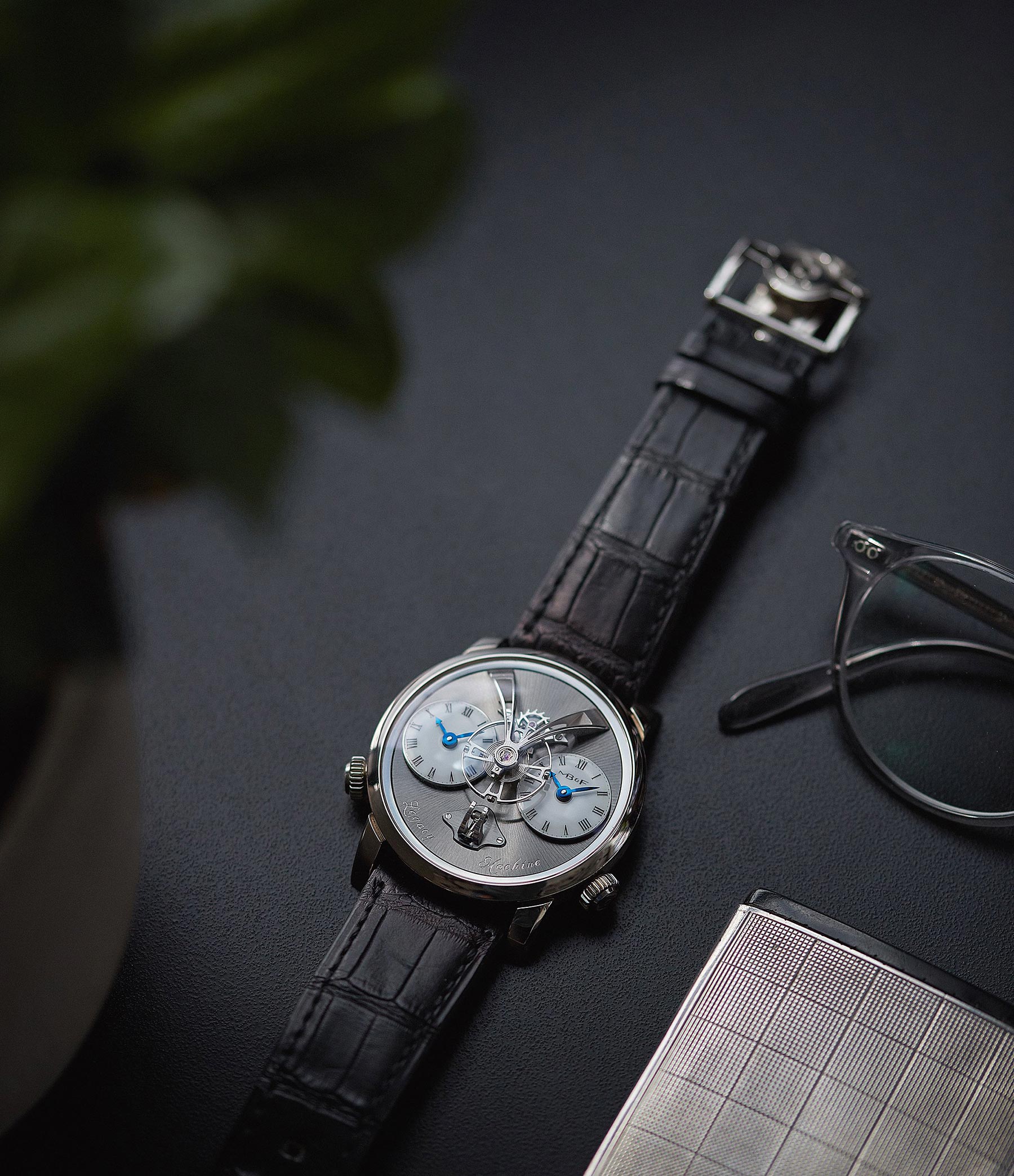
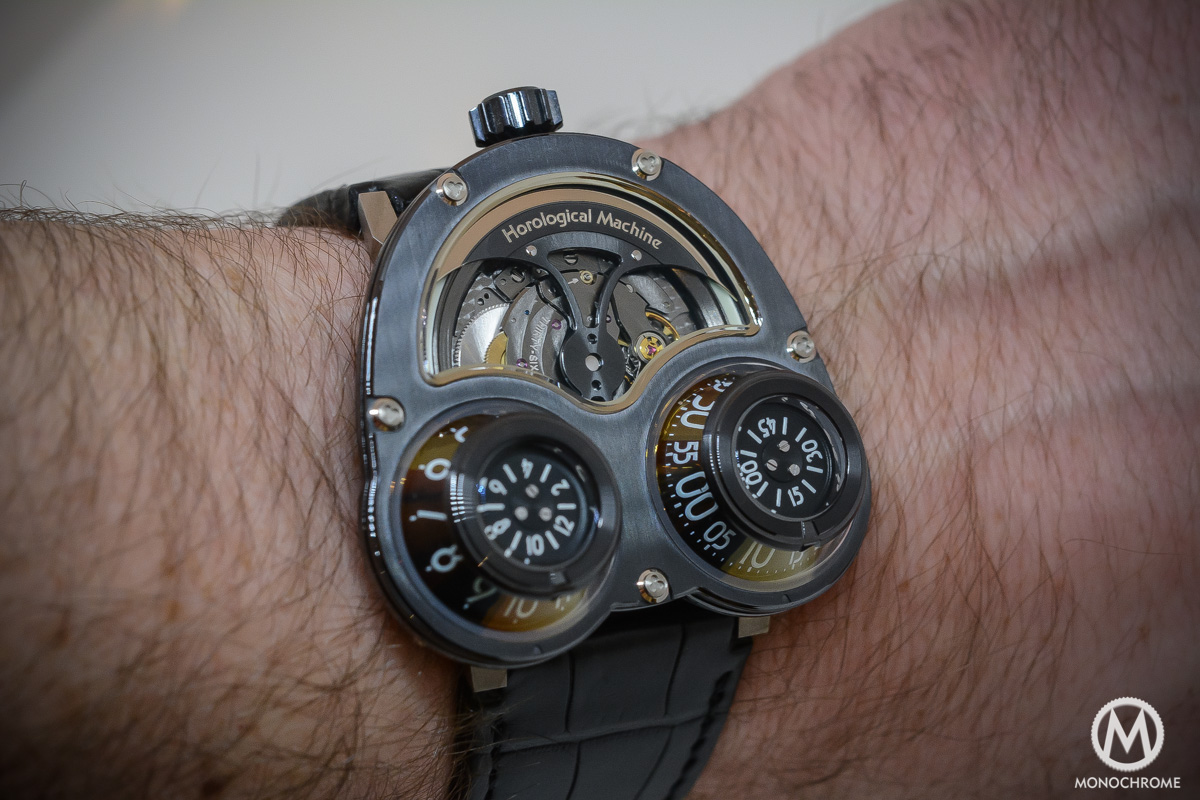

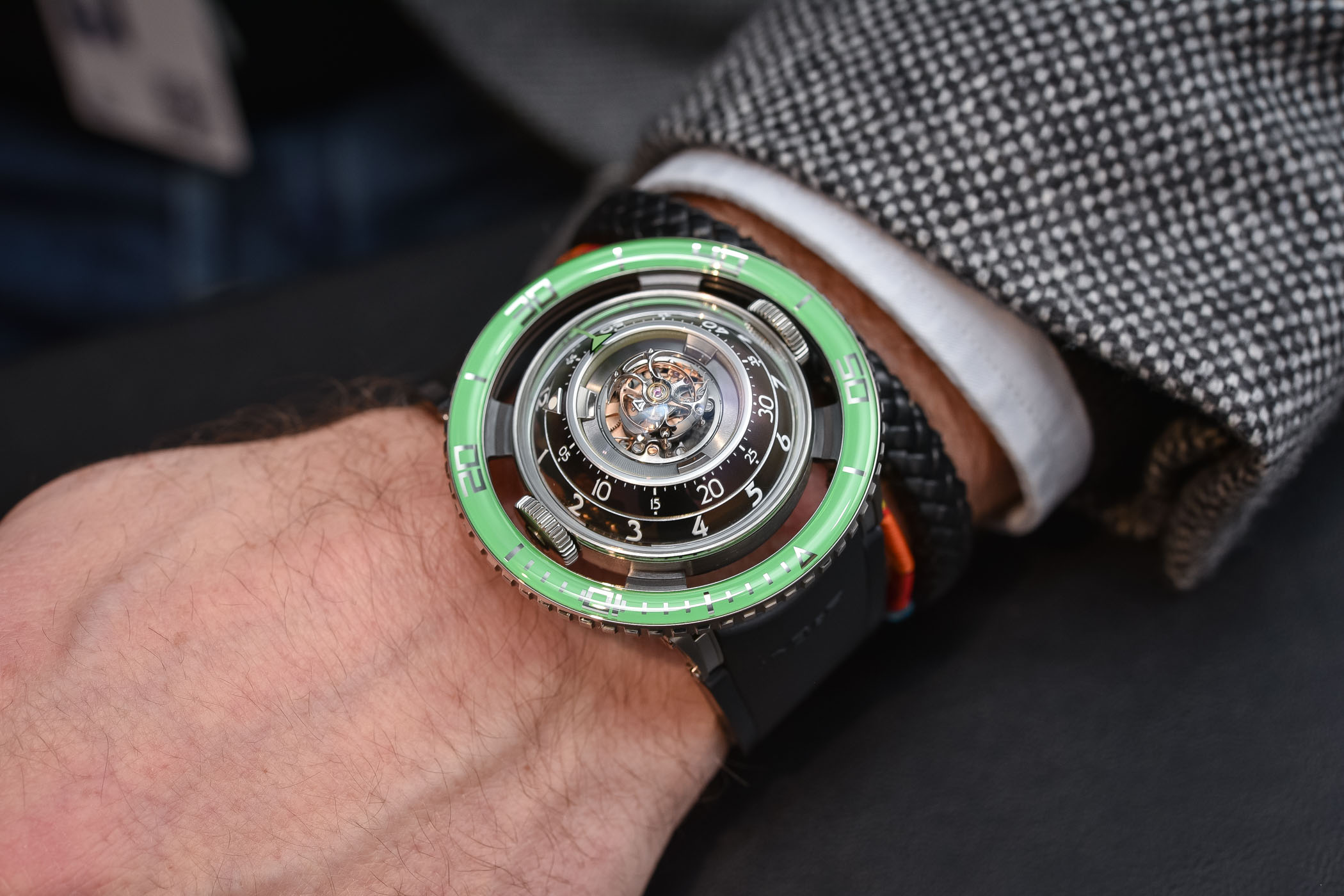
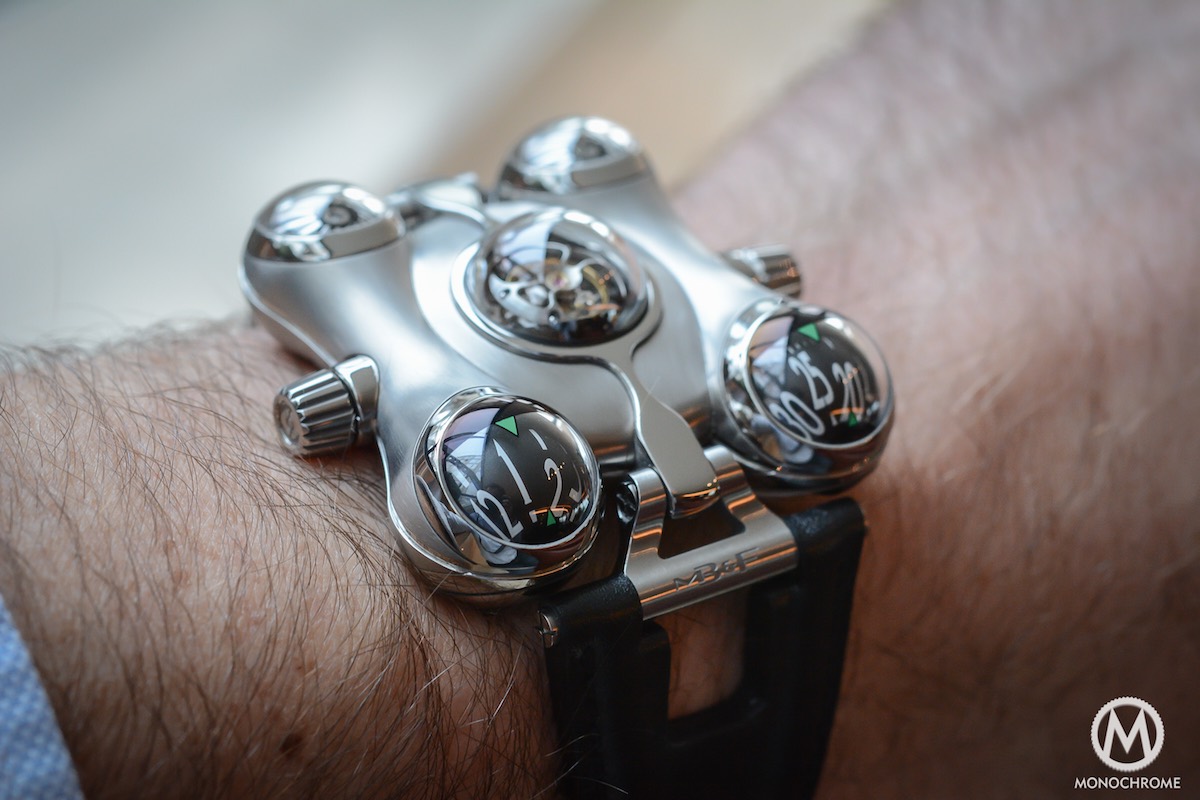
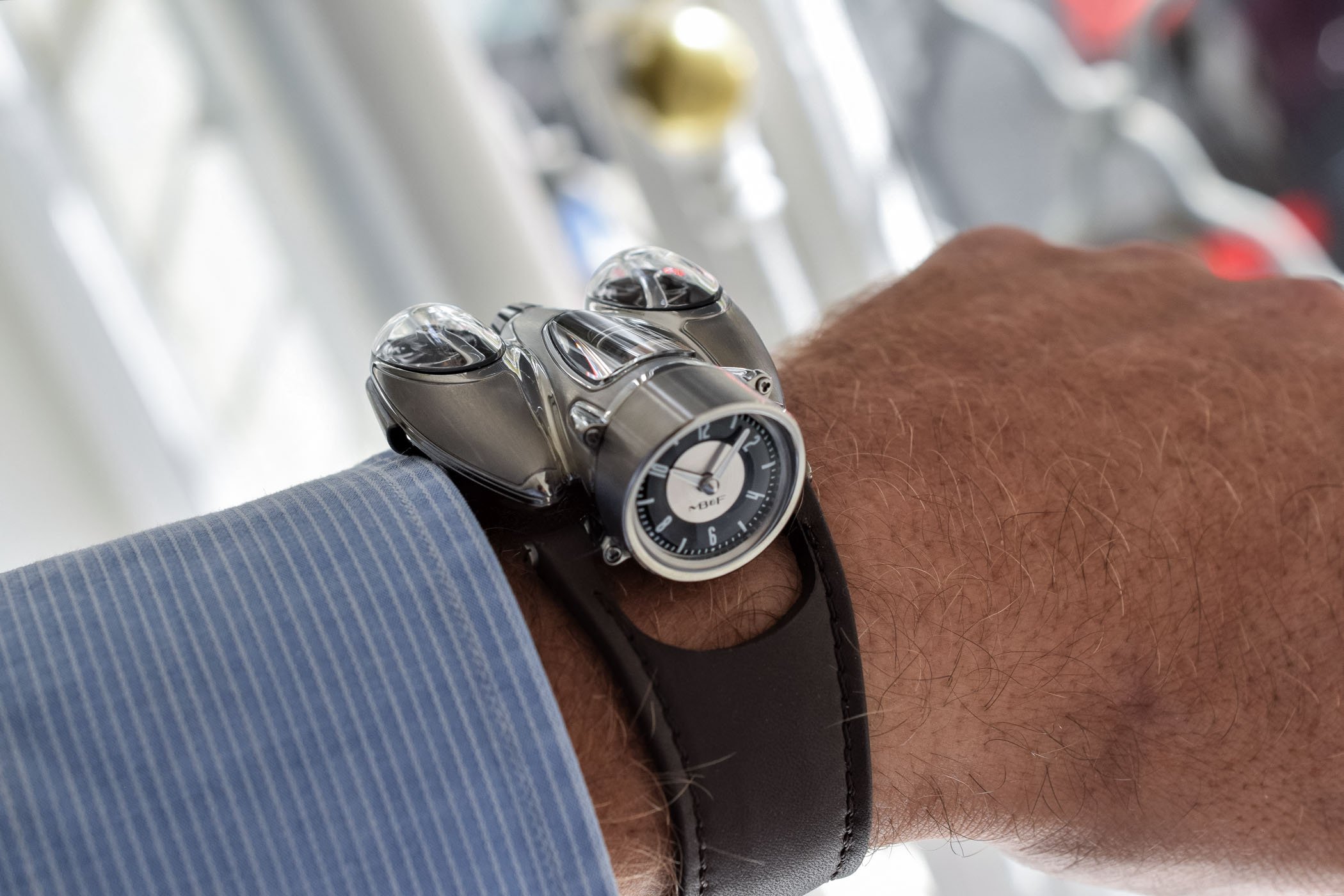
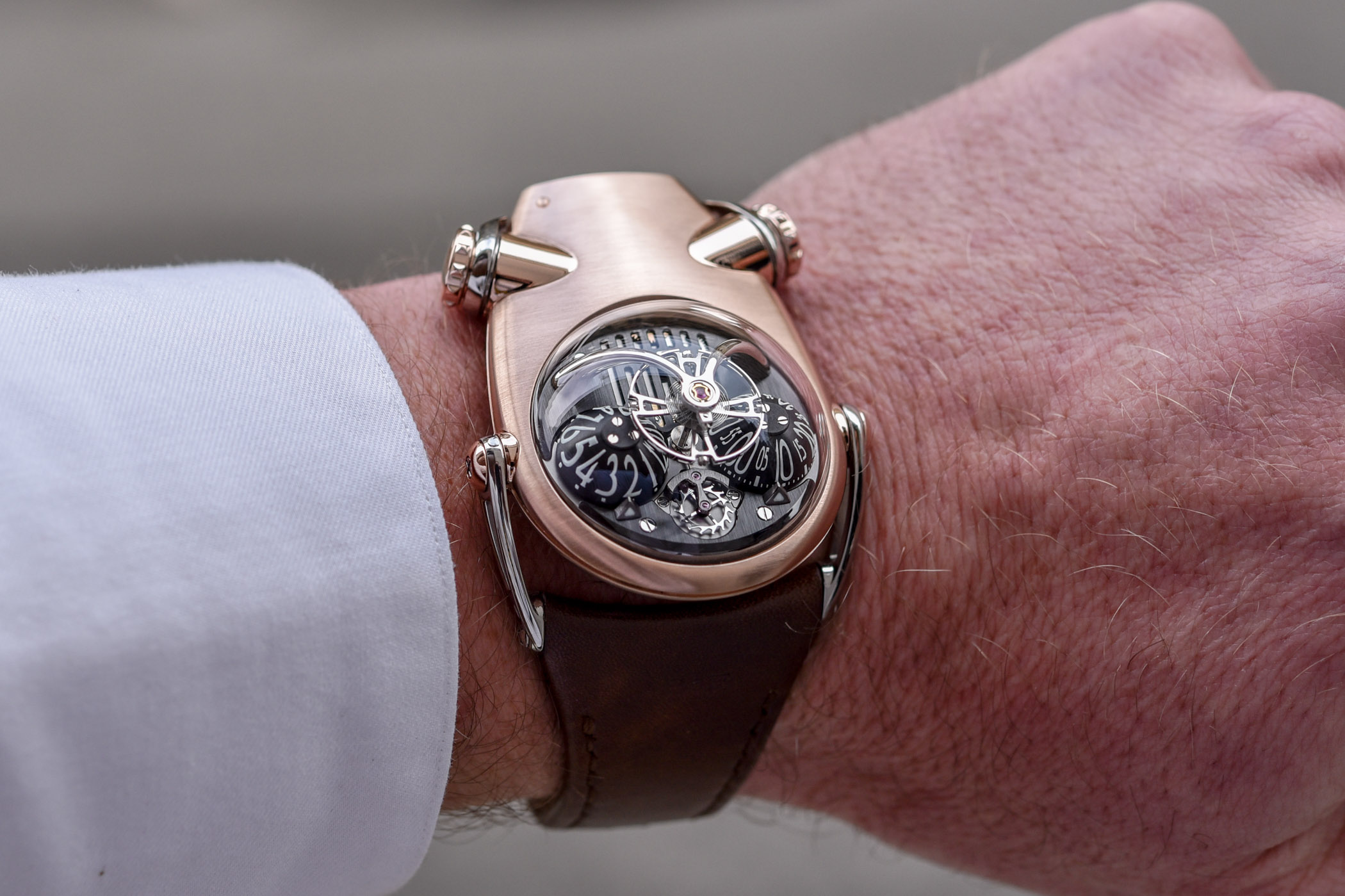
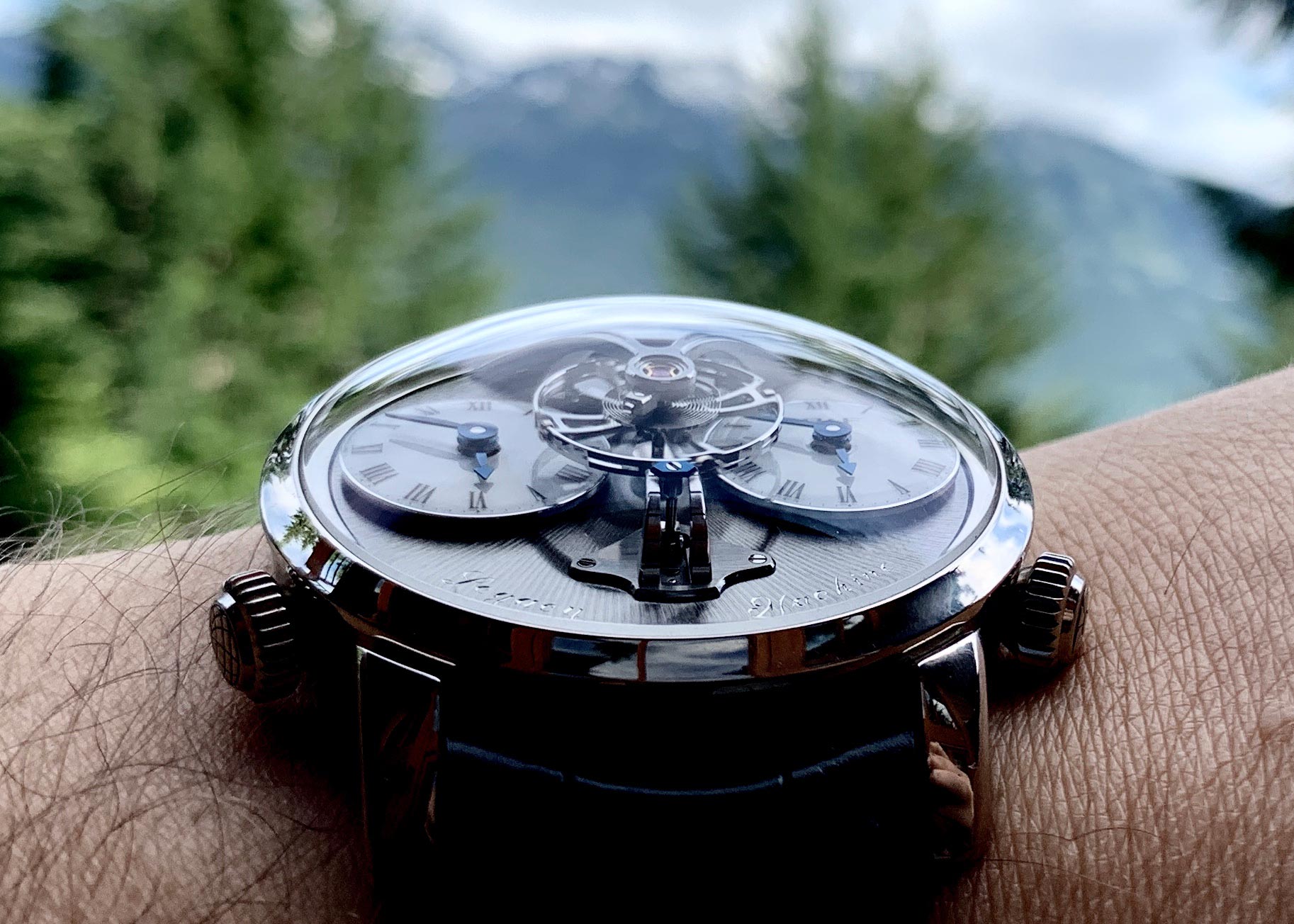
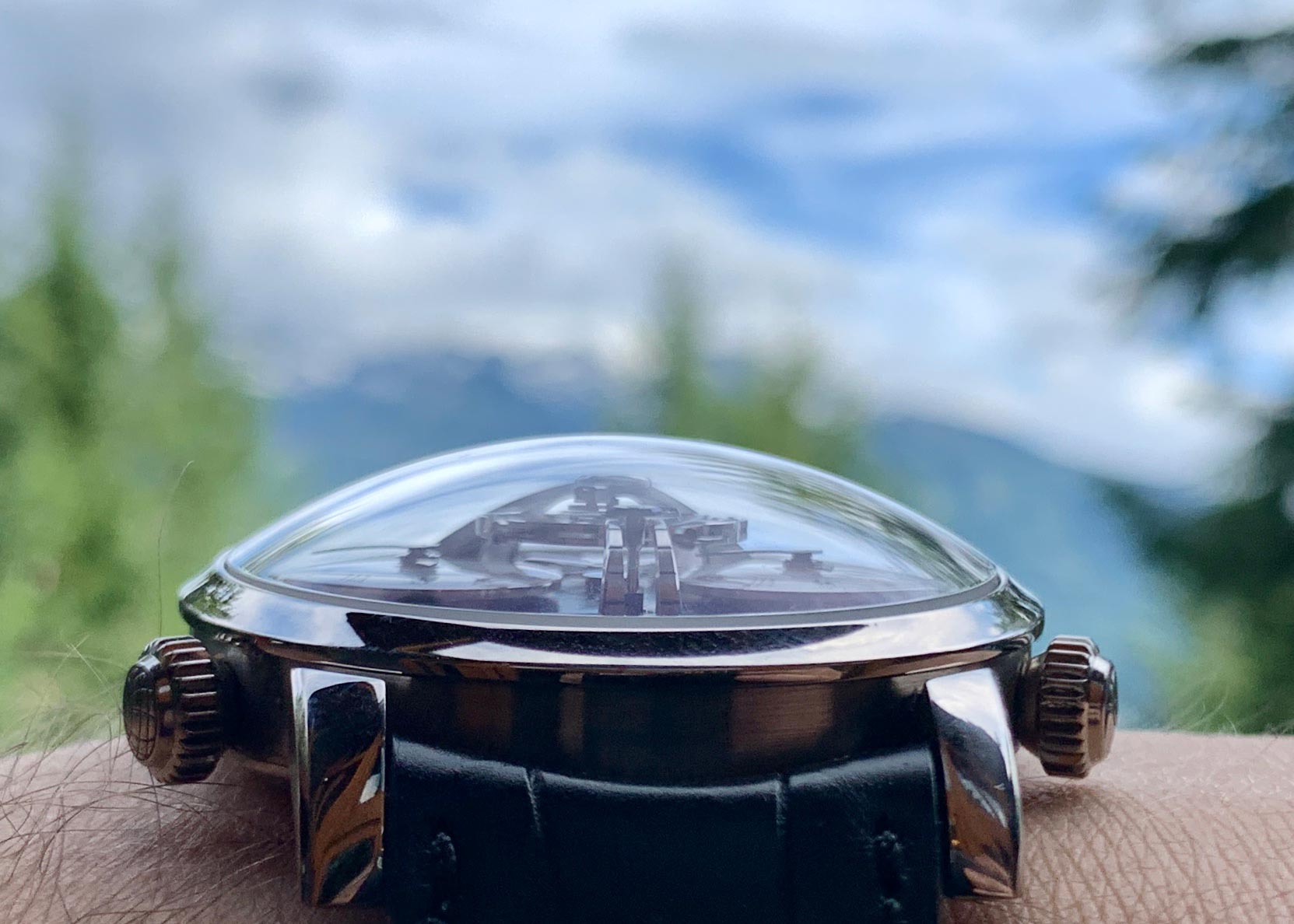
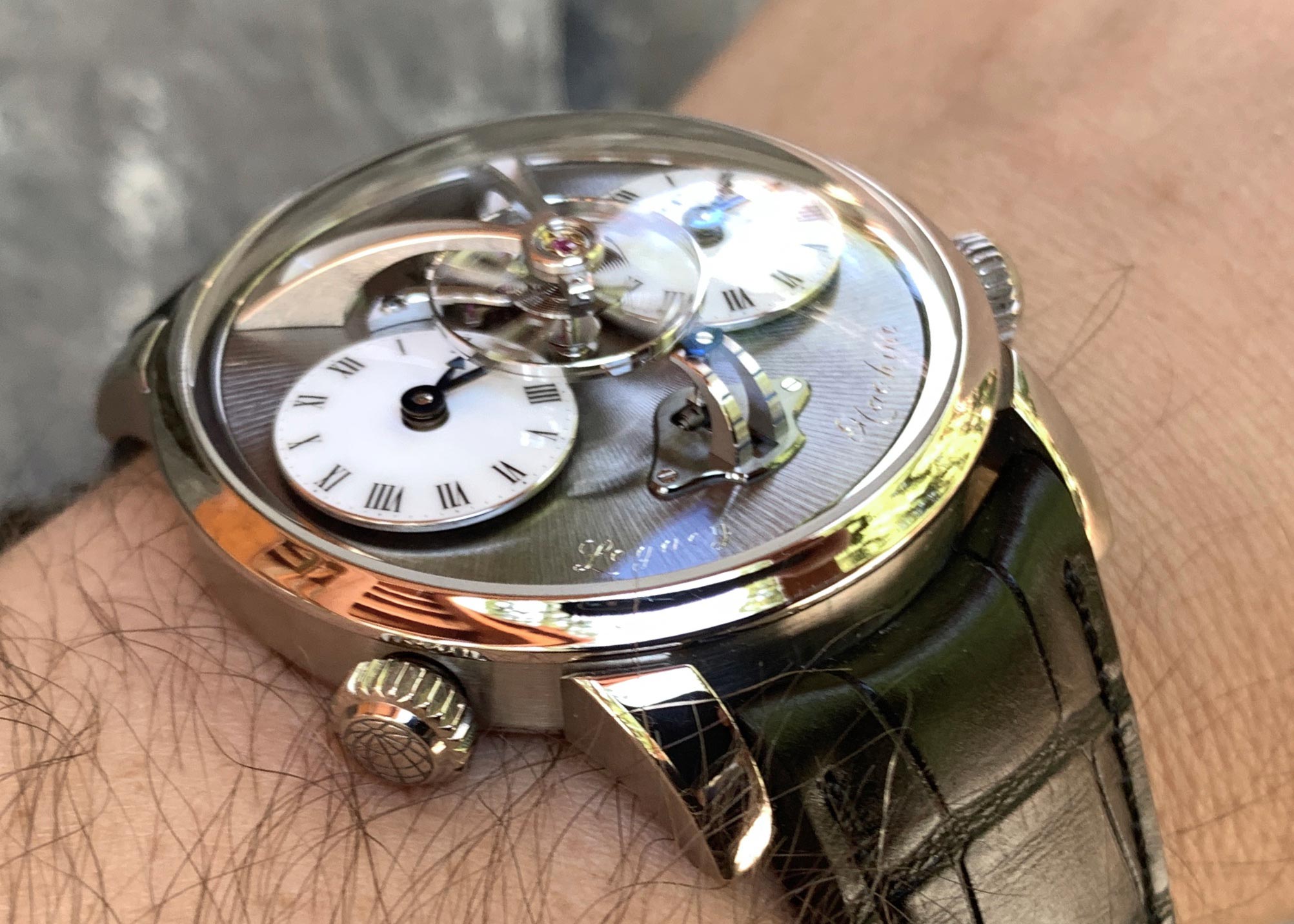
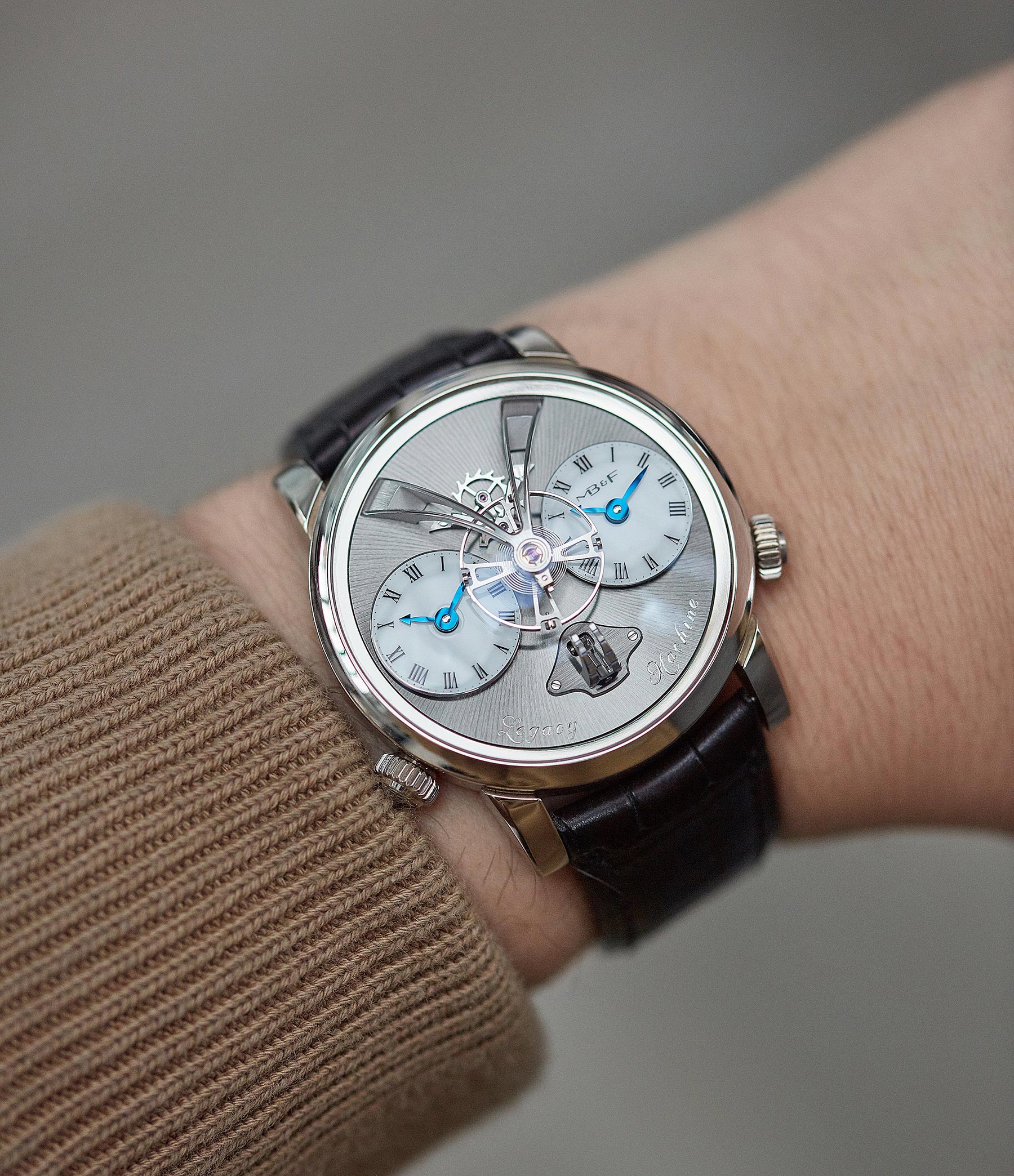
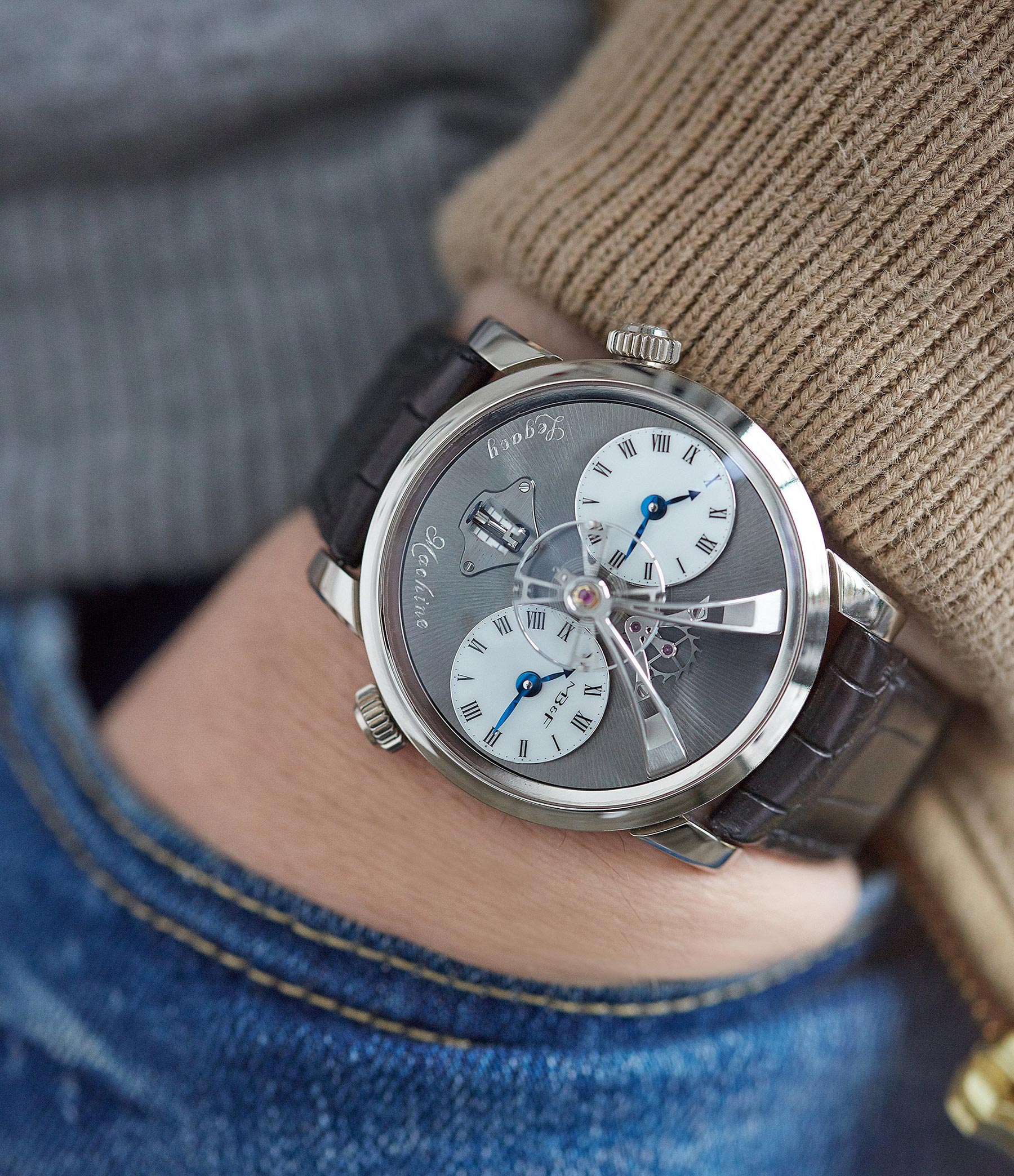
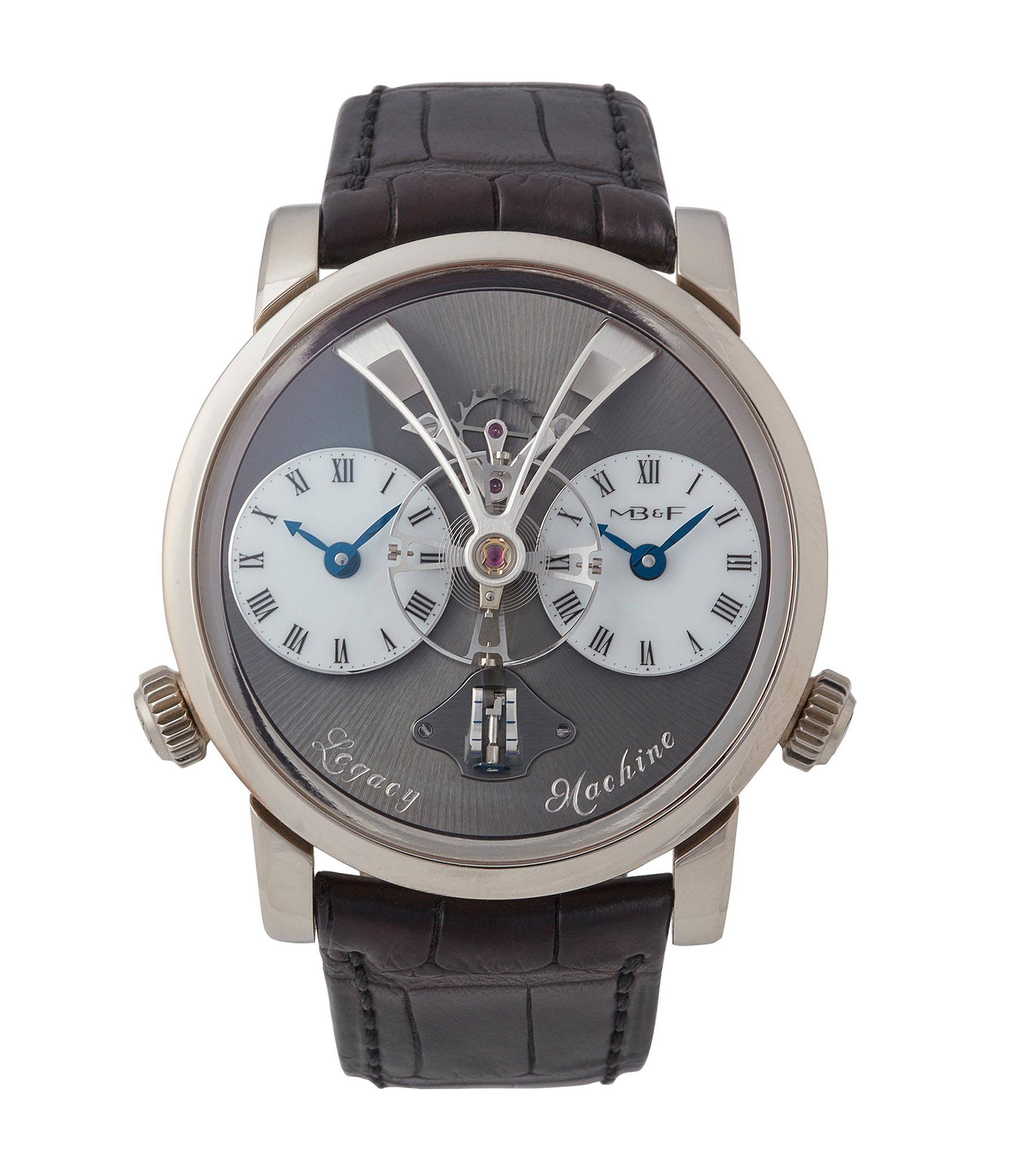

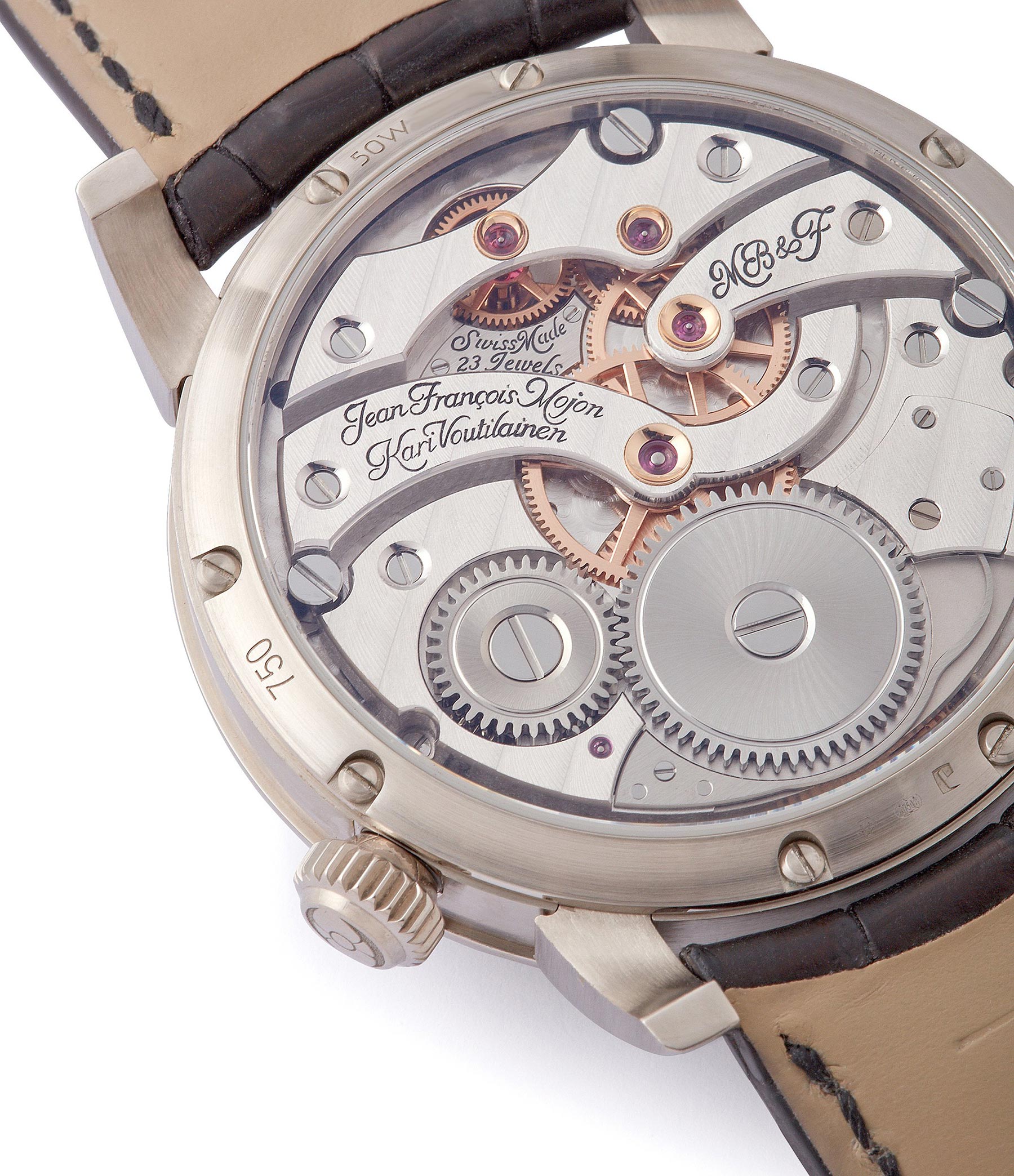
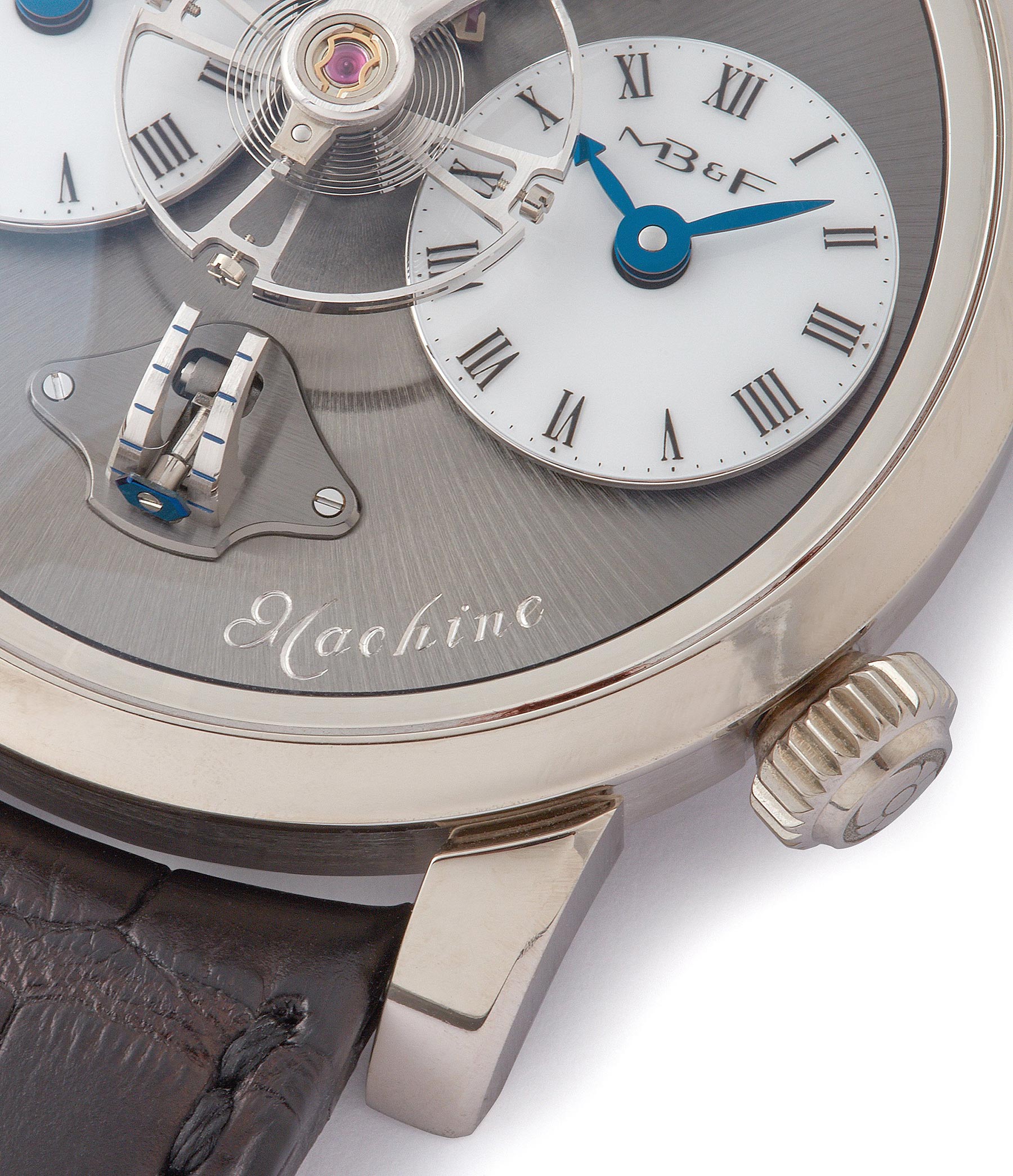
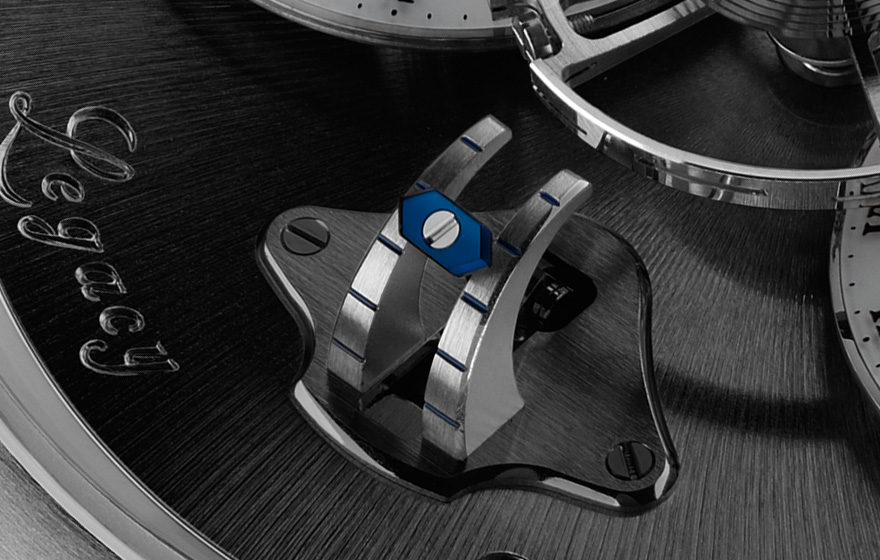
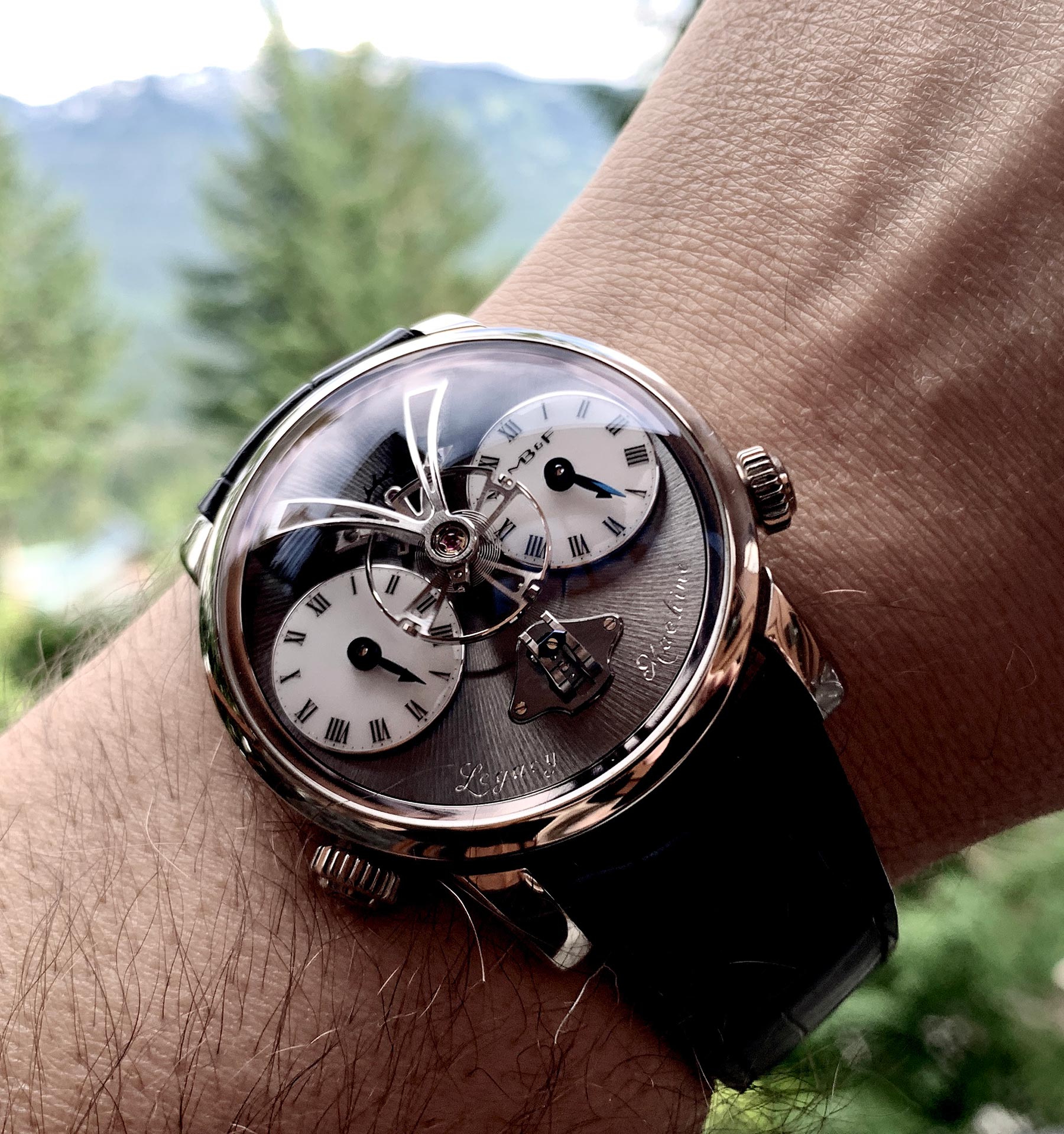
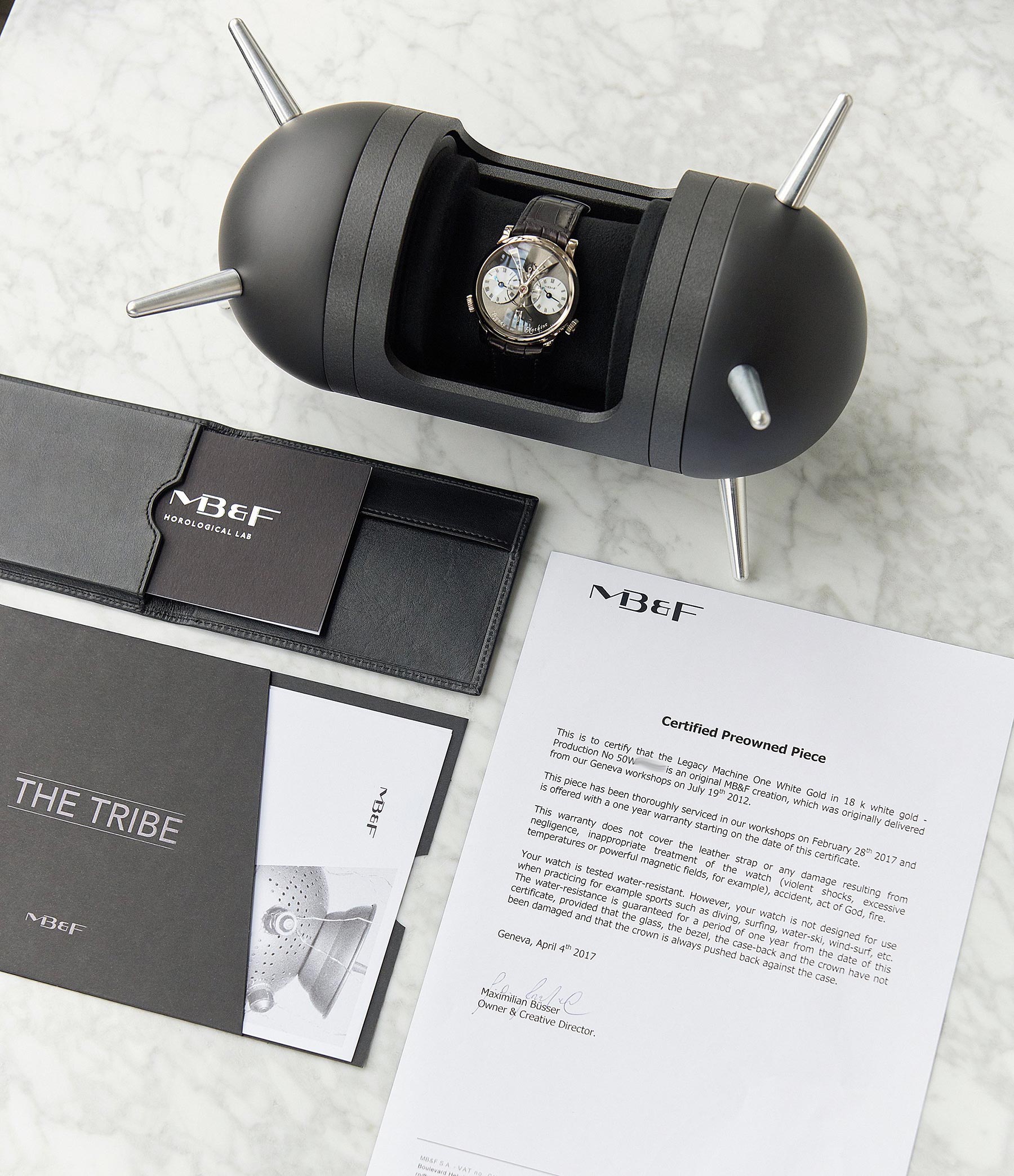
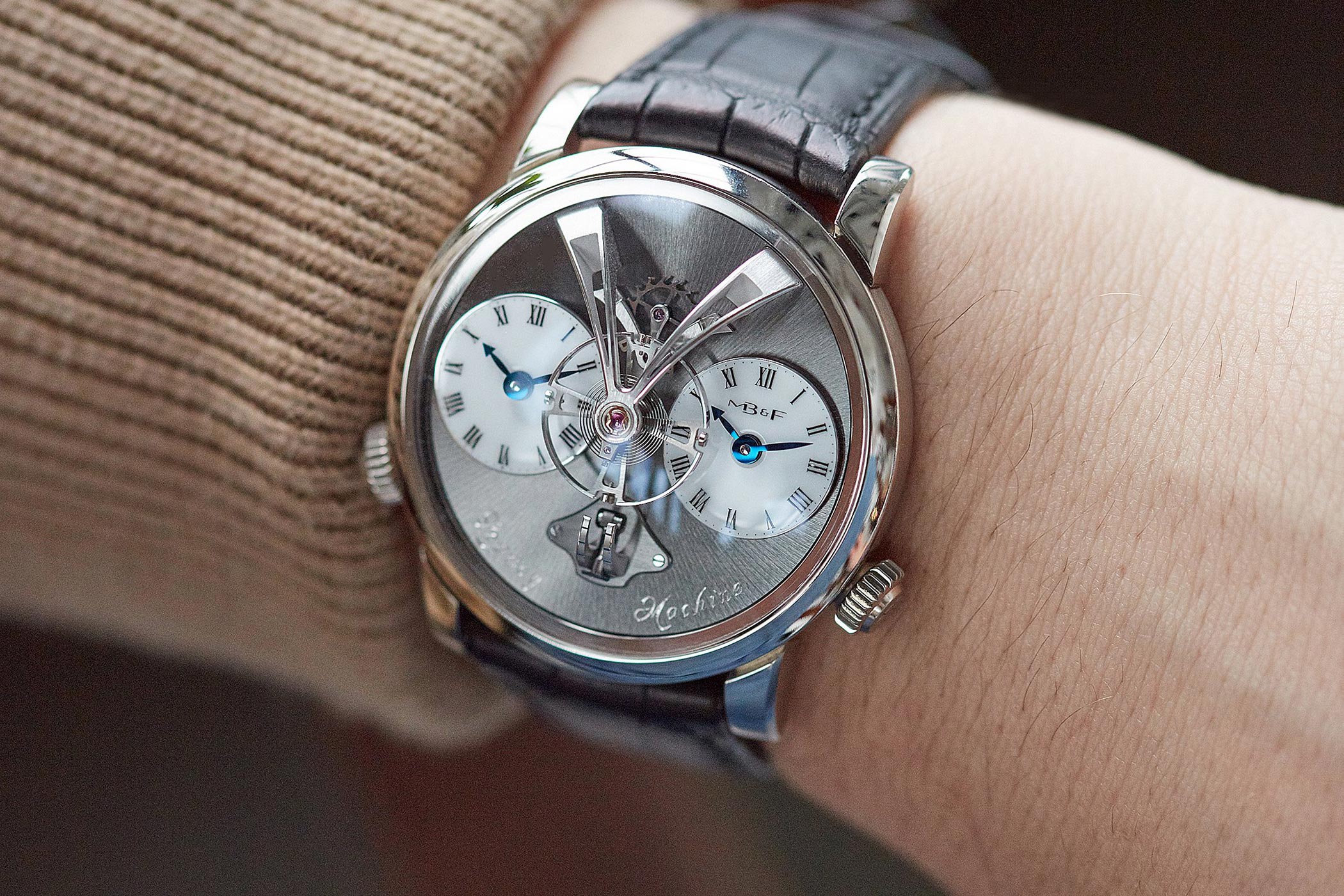
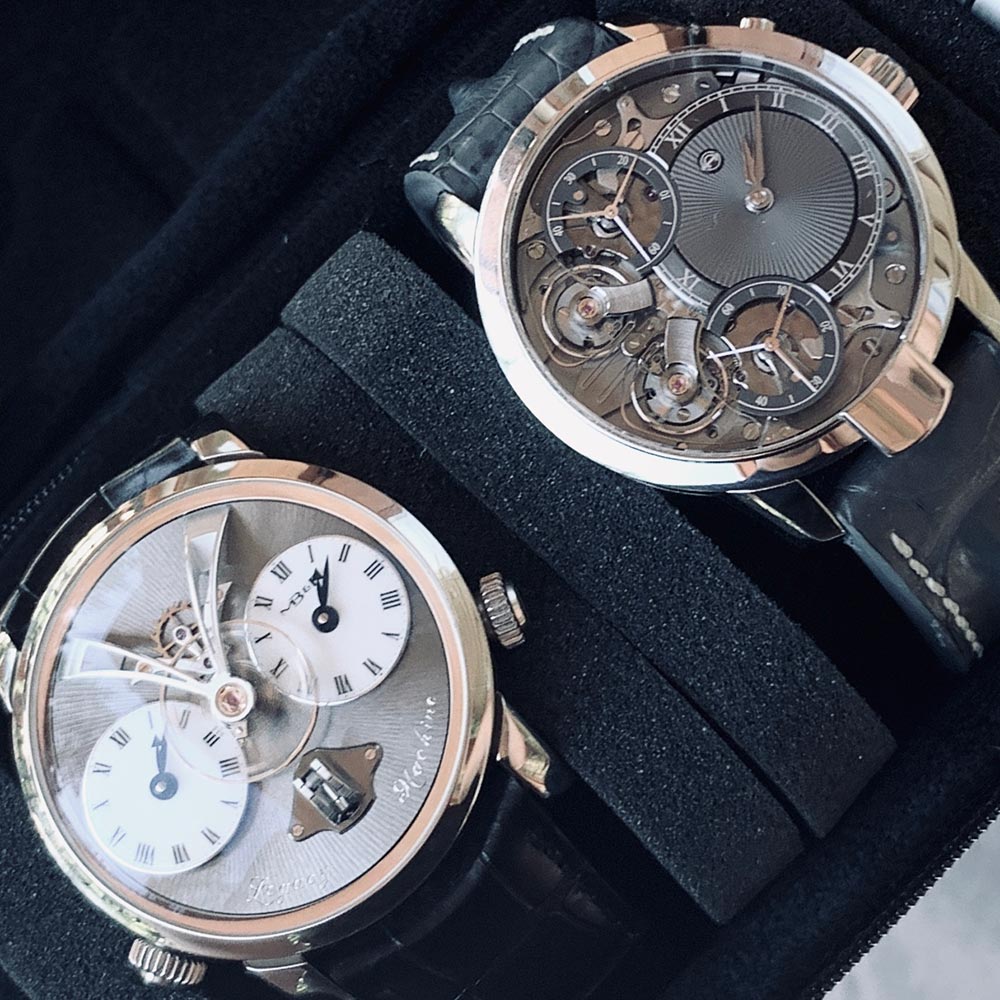



6 responses
While not something I could carry off, this particular version is the nicest watch MB&F have made, in my opinion. Quite beautiful.
beautiful pictures. congratulations to the photographer! my only comment on that – expensive watches + leica camera is been done over and over again at Hodinkee. No need to repeat here … I am sure you can come up with your own ‘signature arrangement’ … evens more so, since the m8 was not exactly a perfect rangefinder camera … 😉
Goes to the target audience,they think if you own one,you own the other, nonsense I know, but it’s a cliche and cliches are cliches for a reason. Some people do own both, and man do they let them know in the comments sections ! lol “hey I love my Leica ! (never a mention of the watch that was on offer, but…..).
People who are trying make watches in to commodities (ie I bought this “rare one” and now it has quadrupled in value ,makes me ill.) What kind of person buys an intimate toy like a watch, and worries who’s going to wear it next ? Never seemed right to me. That is how it is now, never going to buy a watch on that basis but it is the main concern of every buyer on Hodinkee. The home of the LE by Hodinkee and for every flipper on earth. Watch buying and comic book buying have become the same kind of venture , just at different price levels.
Excellent read and amazing watch from a even more amazing brand . I really hope to add a LM or a HM3 at some point in the future.
Great collector with a even greater collection.
MB&F machines are truly a work for art. Most cutting edge designs on the market. Great future ahead!